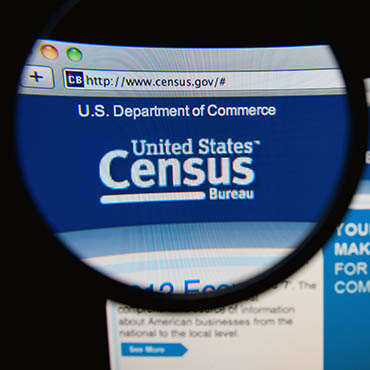Can the Census Bureau really deliver $5 billion in savings?

Unexpected cost overruns to critical systems and decisions to cancel or suspend various programs risk eating into the $5 billion in savings proposed by Census Bureau for its 2020 count.

After the expensive 2010 census, with its IT boondoggles and acquisition chaos, the government promised to do better in 2020, by cutting a $5 billion from the projected cost of conducting the 2020 population count.
Now much of that savings is at risk, according to the top Census official and the government watchdog that oversees the department.
Unexpected cost overruns to critical systems and decisions to cancel or suspend various programs, including the 2017 in-field testing, risk eating into the hoped-for savings, Census director John Thompson testified.
The Government Accountability Office has long harbored such doubts. In June 2016, the GAO reported that Census's October 2015 estimate that it could pull off the 2020 count for $12.5 billion "cannot be considered reliable" because the estimate did not meet best practices and did not fully account for risks associated with the new technologies.
At a May 3 hearing of the House Appropriations subcommittee that funds the census, Thompson testified that the Census Bureau's "best estimate" for the total lifecycle cost of the 2020 count is still $12.5 billion, which would save more than $5 billion compared to repeating the paper-based 2010 methodology. But he acknowledged that the $5 billion figure "might change over the summer" when Census will release its new, official lifecycle cost estimate.
Dave Powner, who leads GAO's IT oversight, testified that pulling off 2020 Census with the degree of technology Census has proposed is "doable, but the issue is, at what cost?"
Powner said the three areas representing "major concerns" for GAO are cost growth, schedule and security.
"The bureau's track record for delivering IT for previous decennials is not good," he said. "Unfortunately, we see similar issues for 2020 -- late starts, schedule pressure and not enough transparency."
Powner testified that he thinks that total IT costs are going to be far higher than anticipated.
"I think the IT costs are going more than likely be $1 billion more than [the estimated $2.4 billion] if I did simple math," he said.
Powner said the Census Enterprise Data Collection and Processing (CEDCaP ) program, which will centralize data collection for all census activity, overran its initial cost estimate by about $417 million. He also noted that Census awarded an $886 million IT integration contract that was absent from the October 2015 estimate, as well as a call center contract worth about $500 million.
Rep. John Culberson (R-Texas), who chairs the subcommittee, said that "overruns of this scale are just unacceptable… We need to get this under control."
Thompson noted that decisions -- made due to budget uncertainty -- to increase in-field address canvassers, as well as to cancel the 2017 field tests and advertising in advance of the 2018 end-to-end test, "will result in increased costs… if we don't adjust to them."
Thompson said Census has worked "really aggressively" to improve its official documentation and transparency, and explained that CEDCaP overruns occurred, in part, because "the first estimate was created by subject matter experts rather than certified cost estimators," a problem that has since been resolved.
Powner said that GAO "has concerns" the bureau's 50-odd systems may not be "ready between August of this year and early 2018" for the 2018 dress rehearsal.
Culberson also raised questions about the cybersecurity of Census's IT systems, about two-thirds of which contain respondents' personal information, plus the 400,000 mobile devices to be used by enumerators.
Census CIO Kevin Smith said the bureau is "working very tightly" with vendors, as well the Departments of Commerce and Homeland Security, to ensure data security, and would also be open to working with the FBI.
Powner noted that the coordinating with DHS and the CIO Council are "key" for sharing cyber best practices, adding that "you do typically have a federal CIO out of the White House" -- a position that is currently unfilled.
NEXT STORY: Culture clash in FAA's drone push


